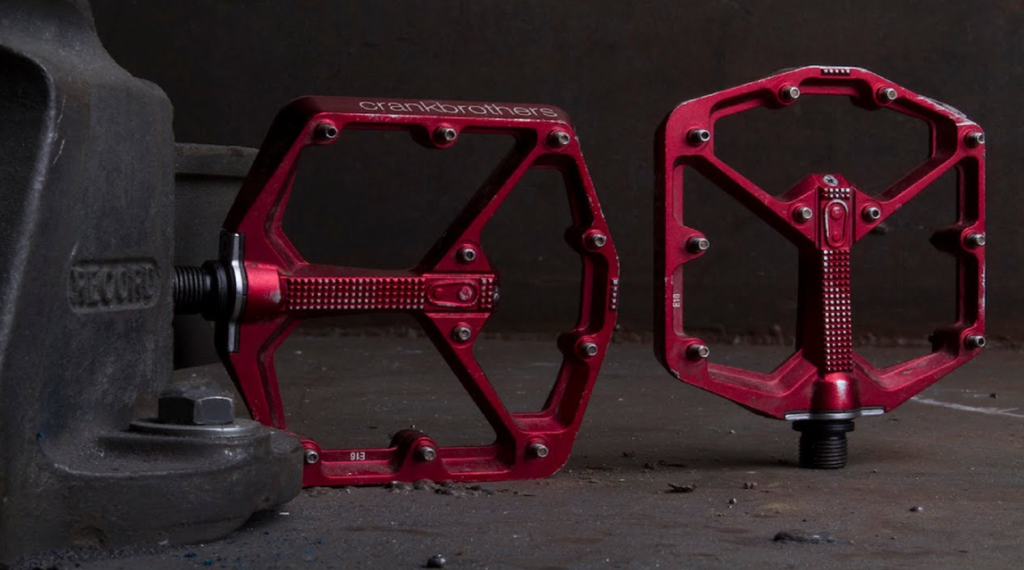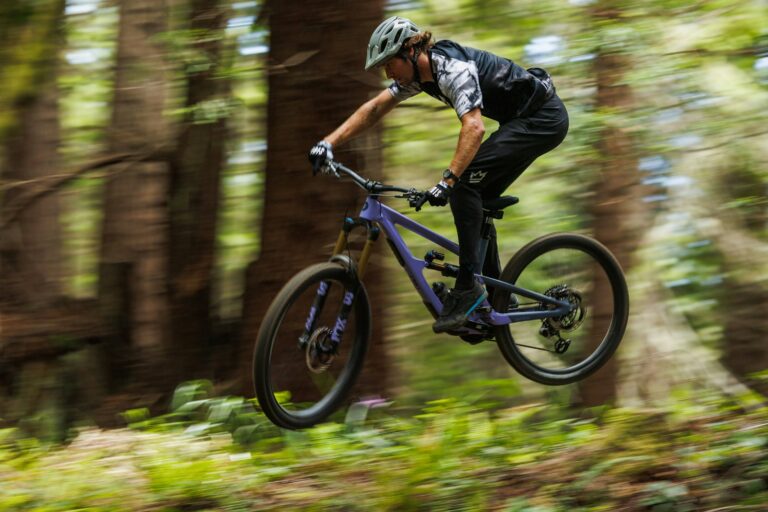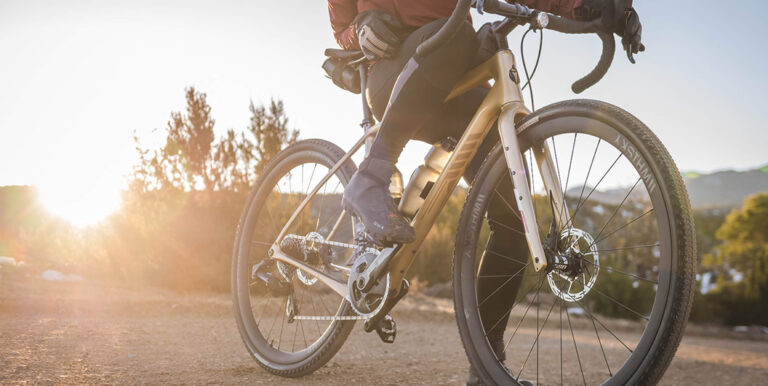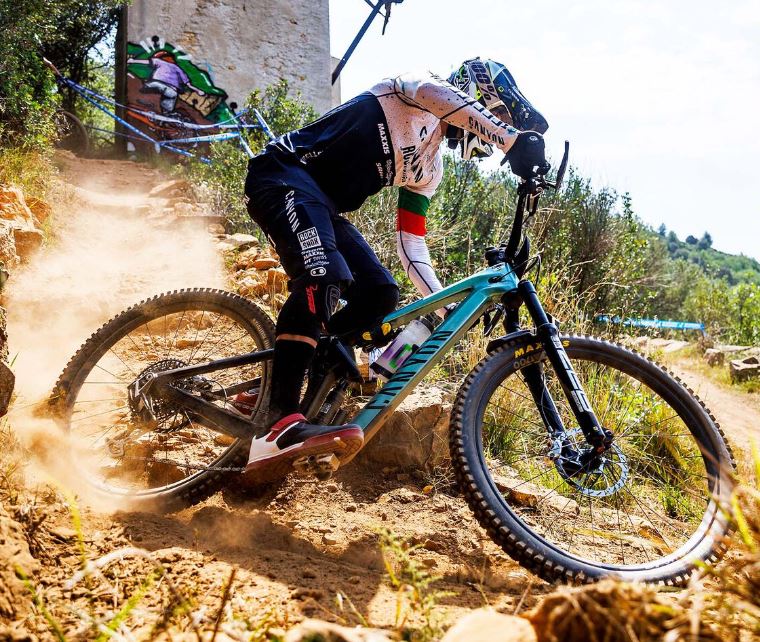Choosing the Right Beat for the Trail: Pedal Types for Enduro Biking

Key Point Summary of Pedal Types for Enduro Biking:
- Pedal Types: Enduro bikers typically choose between clipless and flat, each offering distinct advantages.
- Clipless Pedals: Provide a secure connection between bike and rider, enhancing pedal efficiency and bike control on technical climbs and descents.
- Flat Pedals: Offer flexibility and ease of foot placement, ideal for technical terrain and learning new skills.
- Pedal Efficiency: The choice of pedal can affect your pedaling efficiency, impacting your ability to climb and maintain speed.
In the world of enduro biking, where the trails can range from lung-busting climbs to hair-raising descents, the choice between clipless and flat pedals is more than just a matter of preference; it’s about finding the right tool for your riding style and the terrain you’re tackling.
Clipless Pedals: A Connected Ride
Clipless pedals, which actually involve clipping in, might seem counterintuitive by name, but they provide a secure connection between your bike and you. This locked-in feeling can be a game-changer on enduro trails. There’s something about the confidence of knowing your feet won’t slip off the pedals that allows you to push harder, especially on technical climbs and while navigating rock gardens. The efficiency of power transfer when you’re clipped in means that more of your effort is directly translated into propelling the bike forward.

However, clipless pedals also come with a learning curve. My first experience with them was a mix of exhilaration and a few too-close-for-comfort moments when I couldn’t unclip in time. Yet, with practice, the motion of clipping in and out became second nature, allowing me to focus more on the ride and less on my feet.
Flat Pedals: Freedom and Flexibility
On the other side of the coin are flat pedals. These are the go-to for many riders who prioritize the ability to quickly plant a foot down or adjust their footing on the fly. Flats excel in giving you the freedom to bail out from a sketchy situation or dab a foot for balance without the split-second delay that can come with clipless pedals. They’re also fantastic for practicing new skills, as they forgive mistakes more gracefully.

Switching back to flat pedals for a while as I aimed to boost my technical riding skills was a game-changer. Suddenly, my approach to navigating trail features transformed. With clipless pedals, there was always a moment of hesitation, a slight pause as I considered the need to unclip if things went south. But on flats, that caution evaporated, replaced by a newfound boldness. I found myself tackling challenging lines I would have steered clear of before, empowered by the quick escape flats afforded.
Finding Your Pedal Match
Choosing between clipless and flat pedals for enduro biking isn’t just about analyzing the mechanics of each option; it’s about considering what feels right for you. Some riders swear by the efficiency and control of clipless pedals, while others prefer the flexibility and immediate confidence that flats provide.
Pedal Efficiency and Performance
The efficiency of your pedaling is crucial in enduro biking. Clipless pedals can offer more consistent power transfer, especially on climbs and long stretches where maintaining momentum is key. However, flats can provide a more natural feel for the bike, allowing for subtle body weight shifts and adjustments that can be critical on technical terrain.
Benefits of Clipless Pedals
- Enhanced Efficiency: These pedals allow for a more efficient transfer of power from your legs to the bike because you can pull up as well as push down. This can be particularly beneficial on long climbs or when accelerating.
- Improved Bike Control: Being physically attached to your bike means better control over rough terrain. This can translate to smoother handling in technical sections where precise movements are crucial.
- Consistency: Your feet are always in the optimal position for pedaling, which can help improve your technique and reduce the risk of knee strain from poor foot placement.

Benefits of Flat Pedals
- Ease of Use: For beginners or riders tackling highly technical trails, the ability to quickly plant a foot can boost confidence. There’s no need to clip out in a split second, which can be reassuring.
- Flexibility: They allow for quick foot adjustments. This can be helpful in learning new skills, where you might need to shift your foot position or quickly dab a foot down for balance.
- Lowered Risk: For those learning or perfecting technical maneuvers, flats reduce the risk associated with failing to unclip in time during a fall or when bailing out is necessary.
Both pedal types have their place in mountain biking, and many riders find that what works best can depend on the specific riding situation. Some may even switch between flats and clipless depending on the trail or their focus for that ride. Ultimately, the best choice is the one that feels right for you and enhances your enjoyment and performance on the bike.
Pedal Types for Enduro Biking: The Ideal Enduro Pedal Model
If I had to choose a model that represents a balance between weight, durability, and performance for enduro riding, I’d lean towards something like the Shimano XT M8020 for clipless. It offers a robust platform with reliable entry and release, plus the added control when clipped in. For flats, the Crankbrothers Stamp pedals are a solid choice, with their large platform and adjustable pins for grip, accommodating the diverse foot sizes and preferences of enduro riders.
In the end, the choice of pedals is deeply personal and depends on your riding style, the terrain you frequent, and your comfort level with being either clipped in or on flats. Experimenting with both types on familiar trails can provide valuable insights into what works best for you, enhancing your connection with the bike and ultimately, your enjoyment of the ride.

FAQ
What pedals do enduro riders use?
Enduro riders typically use either clipless pedals for their enhanced pedaling efficiency and bike control, or flat pedals for their flexibility and ease of bailing out on technical sections. The choice largely depends on personal preference and the specific demands of the trails they are riding.
What type of pedals are best for mountain biking?
For mountain biking in general, the best type of pedals depends on your riding style and comfort. Both flat and clipless pedals are popular, with flat pedals being favored for their forgiveness and ease of use in technical terrain, and clipless pedals preferred for their efficiency and control on climbs and smoother trails.
What are the three types of bike pedals?
There are three main types of bike pedals:
- Flat Pedals: Offer a wide platform for stability and are used with regular shoes.
- Clipless Pedals: Engage mechanically with compatible cycling shoes for a secure connection.
- Toe Clip Pedals: Feature straps or cages that secure the foot on the pedal, offering a middle ground between flat and clipless pedals.
Are clipless pedals good for mountain biking?
Clipless pedals are indeed good for mountain biking for riders who prioritize pedaling efficiency and precise control over their bike. They can improve power transfer and stability on the bike, which can be particularly beneficial on long rides and climbs. However, they may not be the best choice for those new to mountain biking or those who frequently tackle highly technical trails where the ability to quickly dismount can be crucial.
Happy trails!
John






